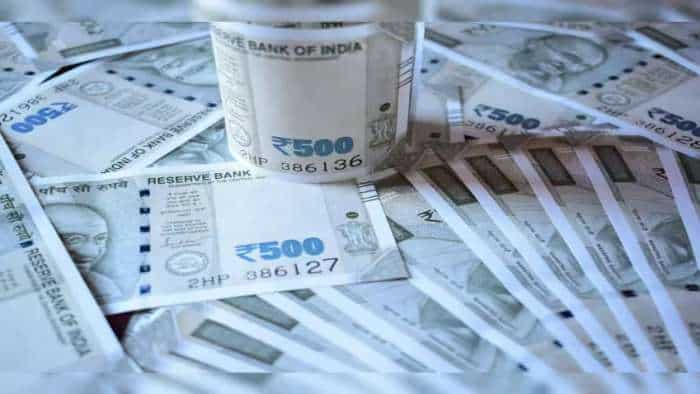India's chemical demand likely to jump to USD 1,000 billion by 2040
In the report titled 'India: The next chemicals manufacturing hub', McKinsey said the country's chemical industry has been a global outperformer in demand growth and shareholder wealth creation over the last decade.

India is likely to account for more than a fifth of incremental global consumption for chemicals over the next two decades as domestic demand is projected to rise to USD 1,000 billion by 2040, McKinsey said in a report.
In the report titled 'India: The next chemicals manufacturing hub', McKinsey said the country's chemical industry has been a global outperformer in demand growth and shareholder wealth creation over the last decade.
"It now stands poised to play an increasingly dominant role across both consumption and manufacturing in the global arena," it said.
The sector is projected to grow at 11-12 per cent during 2021-27 and 7-10 per cent during 2027-40 -- tripling its global market share by 2040.
"India is expected to account for more than 20 per cent of incremental global consumption for chemicals over the next two decades. Domestic consumption and demand is expected to rise from USD 170-180 billion in 2021 to USD 850-1000 billion by 2040," it said.
Chemicals find wide usage in human lives -- from detergents to clothing and fragrances, from insecticides to paints, and telecommunication to music and media.
McKinsey said the growing demand for biofriendly products globally could benefit India, as it is among the leading producers of many chemicals that are used in such products.
"Triggered by the evolving geopolitical scenario and the trend to diversify from the existing core manufacturing markets; firms are seeking to make their supply-chains more resilient. With its strong value proposition, India could be a preferred destination," it said.
Also Read: IDFC Mutual Fund to be renamed Bandhan MF from this date
However, India will continue to be import dependent for meeting its needs for chemicals. Out of the three main segments of the sector -- inorganic, petrochemicals, and specialty -- only specialty is expected to be a net exporter. Due to limited cracker infrastructure and scarcity of key feedstock and minerals, both petchem and inorganic segments will be import dependent.
"Over recent years, changing geopolitical scenarios have led to many countries focusing on domestic self-sufficiency and localised supply chains. However, benchmarking India's manufacturing competitiveness reveals that India has a strong starting point vs other key global chemical clusters that could translate into India becoming the next chemicals manufacturing hub," McKinsey said.
"India will be the fastest growing global demand centre for chemicals with domestic consumption set to grow at a 9-10 per cent CAGR in the coming years on the back of rising disposable incomes, a favourable demographic dividend, increasing global preference for biofriendly alternatives, and growing diversification of global chemical supply chains," it said.
The specialty chemicals segment is likely to be a key driver of this growth. It has the potential to contribute more than USD 20 billion to India's net exports by 2040, a 10 times jump from the current total of USD 2 billion.
McKinsey said benchmarking against six global chemical clusters surfaces both India's strengths and areas of improvement as a global destination for manufacturing chemicals. "Indian chemical companies often face obstacles in feedstock availability due to lagging cracker capacity and low access to building blocks and key minerals".
Additionally, India faces a dearth of skilled R&D talent and challenges in timely environment and land approvals. "Despite this, India is cost competitive in several chemical segments due to low capital and operating expenses such as labour, utility and overhead expenses etc," it said.
Coupled with promoters' focus on high profitability and a culture of process innovation, Indian chemical companies generate one of the highest EBITDA per unit of investment in fixed assets. "This is evident from global leadership of multiple Indian firms across segments like agrochemicals, pharma intermediates, dyes and pigments, carbon black etc," it said.
Many sub-segments in India's chemicals sector offer opportunities for building at-scale businesses. Winning plays exist across specialty chemicals (agrochemicals, flavours & fragrances, cosmetic chemicals), inorganic chemicals (caustic, fluorine) and petrochemicals (C4, C6 and C8 derivatives). "These sub-segments score high on both cost competitiveness -- a function of domestic feedstock availability, trade balance, capacity utilisation, scope of process and tech innovation -- and market attractiveness, an indicator of market size, demand growth, export potential," it added.
Get Latest Business News, Stock Market Updates and Videos; Check your tax outgo through Income Tax Calculator and save money through our Personal Finance coverage. Check Business Breaking News Live on Zee Business Twitter and Facebook. Subscribe on YouTube.
RECOMMENDED STORIES

Hybrid Mutual Funds: Rs 50,000 one-time investment in 3 schemes has grown to at least Rs 1.54 lakh in 5 years; see list

PPF For Regular Income: How you can get Rs 78,000 a month tax-free income through Public Provident Fund investment?

Power of Compounding: In how many years, investors can achieve Rs 6.5 cr corpus with monthly salaries of Rs 20,000, Rs 25,000, and Rs 30,000?

SBI Guaranteed Return Scheme: Know how much maturity amount you will get on Rs 2 lakh, 3 lakh, and Rs 4 lakh investments under Amrit Vrishti FD scheme
06:46 PM IST











 Tata Consumer Products denies reports on exit of Starbucks from India
Tata Consumer Products denies reports on exit of Starbucks from India  Dmart most-valuable India co founded by self-made entrepreneur post-2000; Zomato, Swiggy next: Hurun
Dmart most-valuable India co founded by self-made entrepreneur post-2000; Zomato, Swiggy next: Hurun  Amazon exits Shoppers Stop; sells 4% stake for Rs 276 crore
Amazon exits Shoppers Stop; sells 4% stake for Rs 276 crore  Innovative risk management, collection efficiency focus areas to drive growth: Satin Creditcare
Innovative risk management, collection efficiency focus areas to drive growth: Satin Creditcare Life Insurance Corporation of India pares 2% stake in NMDC
Life Insurance Corporation of India pares 2% stake in NMDC